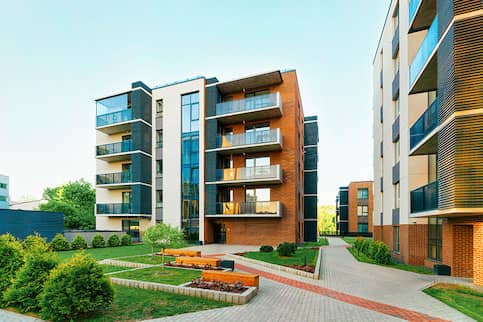What to Expect from Your HOA Condo Association
What to Expect from Your HOA Condo Association
Blog Article
The Function of an HOA in Developing and Enforcing Community Standards for Locals
The function of a Homeowners Association (HOA) in establishing and imposing neighborhood guidelines is fundamental to maintaining a orderly and cohesive residential environment. By formulating clear regulations that control elements such as property maintenance and neighborhood conduct, the HOA not just sets standards for homeowners but additionally cultivates a sense of belonging and accountability.
Recognizing House Owners Organizations
Homeowners associations (HOAs) function as controling bodies for property neighborhoods, playing an important role in keeping residential property values and fostering a feeling of community. Commonly developed by developers, HOAs are made up of house owners within a designated location who choose a board to oversee the association's tasks. The main features of an HOA include applying neighborhood rules, handling usual locations, and organizing area events.
HOAs run under a set of regulating documents, including restrictions, agreements, and problems (CC&R s), which lay out the legal rights and duties of property owners. These laws aim to guarantee that homes are kept to a specific standard, thus safeguarding the visual allure and overall value of the neighborhood. Furthermore, HOAs often gather fees from home owners to money upkeep, landscaping, and other community services.
The presence of an HOA can substantially affect the living experience within an area (hoa condo). While some homeowners value the organized setting and services supplied, others might discover specific guidelines limiting. Balancing the rate of interests of all house owners is necessary for an HOA to operate efficiently, ensuring that it offers its desired function of enhancing neighborhood living while appreciating individual home owner rights
Creating Neighborhood Standards

To begin, an HOA should conduct surveys or hold meetings that permit residents to articulate their concerns and pointers. This participatory procedure cultivates a feeling of ownership and enhances conformity. Next, the HOA board should evaluate the responses to recognize usual motifs and priorities that call for formal inclusion in the standards.
It is likewise necessary to make certain that the standards are clear, concise, and easily understood. Ambiguities can lead to conflicts and misunderstandings, undermining the purpose of the guidelines. In addition, the guidelines should be comprehensive, covering numerous aspects of neighborhood living, consisting of residential property upkeep, sound levels, and use common locations.
Enforcement of Regulations
Reliable enforcement of community policies is critical for preserving order and ensuring that all citizens stick to the established standards. An HOA needs to apply an organized strategy to enforce these guidelines, which usually entails a mix of surveillance, interaction, and charges for non-compliance.
First, routine assessments and community patrols can help determine violations, guaranteeing that policies are constantly used across the neighborhood. This proactive monitoring enables why not try this out the HOA to resolve concerns prior to they rise, cultivating a sense of responsibility among residents.
Second, clear interaction is necessary. Residents should be informed of the rules and the procedures for reporting violations. An open line of interaction important site encourages homeowners to voice issues and seek explanation on standards, which can enhance conformity.

Last but not least, when violations take place, the HOA must enforce consequences as described in the governing papers. By successfully applying policies, an HOA can grow a harmonious living atmosphere that reflects the cumulative worths of its citizens.
Benefits of HOA Rules
Various benefits emerge from the application of HOA regulations, which offer to enhance the lifestyle within an area. One main advantage is the maintenance of residential or commercial property values. By implementing requirements for looks and upkeep, HOAs make sure that homes and common locations remain eye-catching, cultivating a desirable living setting that can lead to boosted property values over time.
In addition, HOA regulations advertise consistency and harmony within the neighborhood. This coherence in design and upkeep assists to develop a sense of belonging amongst residents, adding to community pride and a favorable atmosphere. Moreover, developed guidelines promote conflict resolution among next-door neighbors by giving clear assumptions and protocols for behavior, thus lessening disagreements.
One more significant benefit is the stipulation of shared amenities and solutions. Many HOAs take care of area facilities such as clubs, pools, and parks, which improve recreational opportunities for homeowners. These amenities not only enhance the lifestyle yet also urge social communication.
Ultimately, the laws set forth by an HOA grow an efficient, harmonious community, you can try these out making certain that homeowners delight in a high criterion of living while promoting an encouraging setting for all home owners.
Common Challenges Encountered by HOAs
Amidst the advantages that property owners organizations (HOAs) can supply, they likewise encounter a variety of challenges that can prevent their effectiveness. One considerable problem is the absence of resident involvement. Many property owners might not take part in conferences or area tasks, resulting in a detach between the HOA board and locals. This disengagement can lead to misconceptions concerning neighborhood standards and a lack of support for enforcement initiatives.
An additional challenge is the enforcement of laws and rules. Conflicts can arise when locals really feel that enforcement is inconsistent or biased, possibly leading to disputes within the area. Additionally, HOAs commonly encounter economic constraints, which can limit their capability to keep common areas or fund neighborhood tasks. This can develop dissatisfaction amongst citizens that anticipate high standards of upkeep.
In addition, browsing lawful intricacies can be daunting for HOAs. They should guarantee compliance with state laws while handling their very own regulating files, which can be a source of complication. Last but not least, developing and transforming demographics community needs need HOAs to adapt their guidelines, often satisfying resistance from long-standing residents who are accustomed to conventional norms. Addressing these obstacles is important for fostering a unified and flourishing community.
Final Thought

By creating clear rules that govern elements such as property upkeep and neighborhood conduct, the HOA not just sets requirements for citizens yet also promotes a sense of belonging and liability.Homeowners organizations (HOAs) offer as governing bodies for domestic areas, playing a vital duty in maintaining residential or commercial property values and promoting a feeling of neighborhood. Several home owners might not take part in conferences or area tasks, leading to a separate in between the HOA board and homeowners. Evolving and changing demographics community needs require HOAs to adapt their guidelines, typically satisfying resistance from long-lasting citizens that are accustomed to conventional norms. Through the growth of clear laws and regular enforcement, HOAs advertise home upkeep, area pride, and count on amongst homeowners.
Report this page